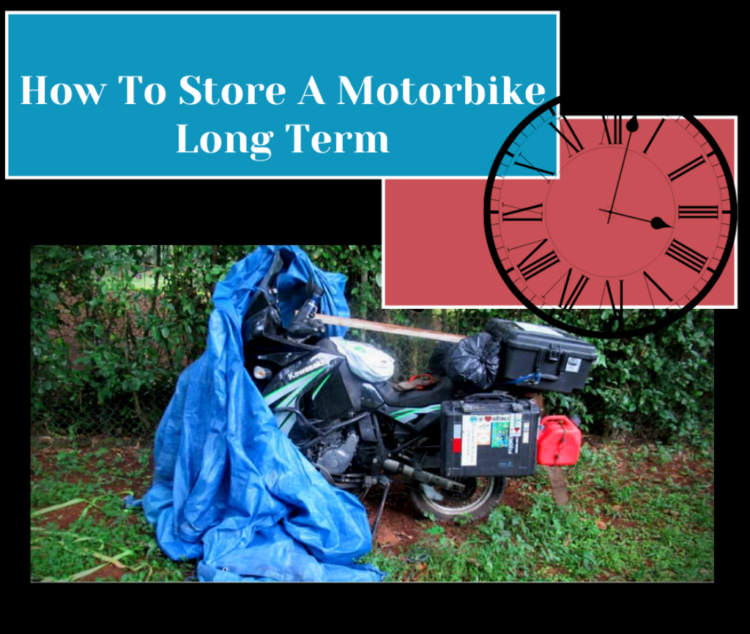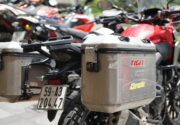Storing a motorcycle properly can make a significant difference on how well it runs upon your return. Whether you’re leaving the country to go on vacation, avoiding the winter season or the world has shut down and you need to abandon your motorbike because of a pandemic. It’s better to prep the bike for long term motorcycle storage then assuming you’ll ride it again in a couple weeks. Here’s the best way to store a motorbike long term to reduce problems when you return.
Motorcycle Storage Checklist
Contents
- Motorcycle Storage Checklist
- How To Wash A Motorcycle For Storage
- How To Store A Motorcycle For 6 Months
- Engine Checklist – Dirty Fluids = Death.
- Motorcycle Battery Storage
- Motorcycle Storage – Tires
- Motorcycle Corrosion Prevention
- Motorcycle Covers & Critters
- How To Store Gear With Your Motorcycle
- Checklist For Getting Your Bike Running Again After Storage. Air-fuel-spark
- Wash your motorcycle.
- Change the fluids.
- Properly store the battery
- Tires. Lift the bike off the ground.
- Lube the chain and unfinished metals.
- Cover with a motorcycle cover or tarp.
How To Wash A Motorcycle For Storage
Sounds too easy right, just wash the motorcycle? One of the easiest and best things you can do before long term storage is wash your motorcycle. Unseen enemies like bug guts, saltwater, chemical & fuel stains, will all slowly eat away at your bike over the long run.
- Wash the bike with warm water, pressure and an approved automotive cleaner.
- Spray unseen areas like under the engine, in the suspension, around the fuel area.
- Dry by hand to ensure you are wiping away any build up.
- If you love your baby, consider coating with a wax polish at the end.
How To Store A Motorcycle For 6 Months
The length of time your motorcycle will be in storage may affect just how much prep it requires before storing it away. 6-months to a year or more should be considered long term motorcycle storage and will require the most attention to detail.
Mid-term storage of 4-months or less will require covering the basics to ensure the least amount of problems upon your return. For mid-term, you could get away with simply unhooking the battery, putting a suitable covering on the bike and making sure it’s stored somewhere safe. Go through the checklist below to determine what’s right for you.
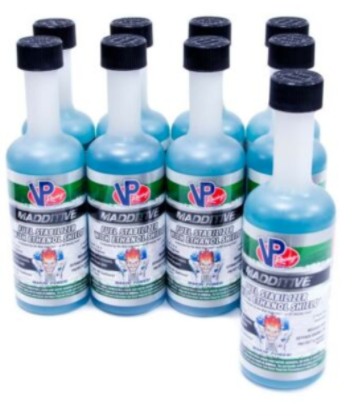
Engine Checklist – Dirty Fluids = Death.
The engine should be your number one concern and the fluids that go into it and help it run need to be carefully looked after. The fluids of your motorcycle are designed to lube, clean, cool, and keep your bike functioning properly. If any of those fluids are dirty it could cause your motorcycle to malfunction or not function at all.
Fluids include:
- Gasoline
- Engine Oil
- Coolant
- Brake Fluid
Gasoline.
Made up of a variety of chemicals and compounds, over time gasoline will eventually begin to breakdown or evaporate. When the fuel breaks down it will begin to stick to your carburetor or fuel injection system. Taking apart and cleaning a dirty fuel system is as exciting as pushing your motorbike up a hill. Typically the maximum amount of time you’d want to leave gasoline sitting is six-months.
To combat old fuel breakdowns use a fuel stabilizer for motorcycles. Fill the fuel tank as full as possible to prevent condensation and follow the bottle’s directions for use. Typically, you’ll add the stabilizer and let the bike run for ten minutes to ensure the additive is completely throughout the fuel system.
When looking for a motorcycle fuel additive for winter for long term storage, find a quality additive. In Vietnam you can find brands like; VP FUEL Ethanol Shield Fuel Additive/Stabilizer, Lucas Fuel Stabilizer, and STOR-X.
The second alternative is to completely drain the fuel system. To do this you’ll need to remove the fuel line from the petcock and drain the lines. Afterward, you’ll want to run your bike until it stalls.
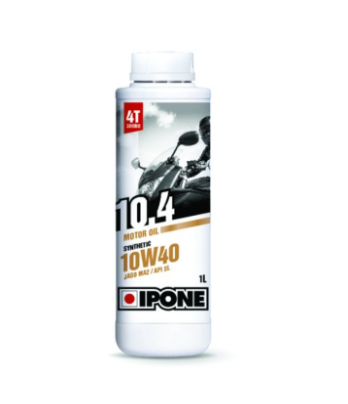
Engine Oil.
One of the simplest and most important pieces of motorcycle maintenance is changing your bike’s oil. It’s easy, cheap, and can be done in every town or city in Vietnam.
Read our full opinion on choosing the correct motorbike oil for your motorbike.
Storing your bike with dirty oil is an engine death sentence. Dirt, corrosion, bits of aluminum and other oil debris can quickly cause harm to your bike’s engine. As this debris settles on pistons and seals it begins to break them down. The solution? Warm-up your engine for a minute or two, then change the oil with a quality product like IPONE 10W40 synthetic prior to storage. If your motorcycle sits in storage for more than six-months, change the oil again before riding it. The long term benefits will well outweigh the short term time and monetary costs.
Engine Coolant.
In the event your ride is liquid-cooled you’ll want to either change the coolant entirely or top it up if it’s still clean. Over time your coolant will become corroded giving off a faded or rusty color. This happens from running your engine hot and possibly cooking your coolant as well as just breaking down over time. Your owner’s manual will advise on how long to go between coolant flushes and the proper amount required for your bike.
Brake Fluid.
Like all motorcycle fluids, brake fluid will also break down (pun intended) over its lifespan and need to be replaced. On the list of fluids to worry about during long term storage this is the least important. At the very minimum top up the brake fluid to avoid air bubbles in the line & to maintain its longevity.
Consult the owner’s manual for maintenance intervals and be sure to have the right tools or a professional change fluid. Too much fluid, too little, air bubbles, and ABS are all finicky parts to changing the brake fluid.
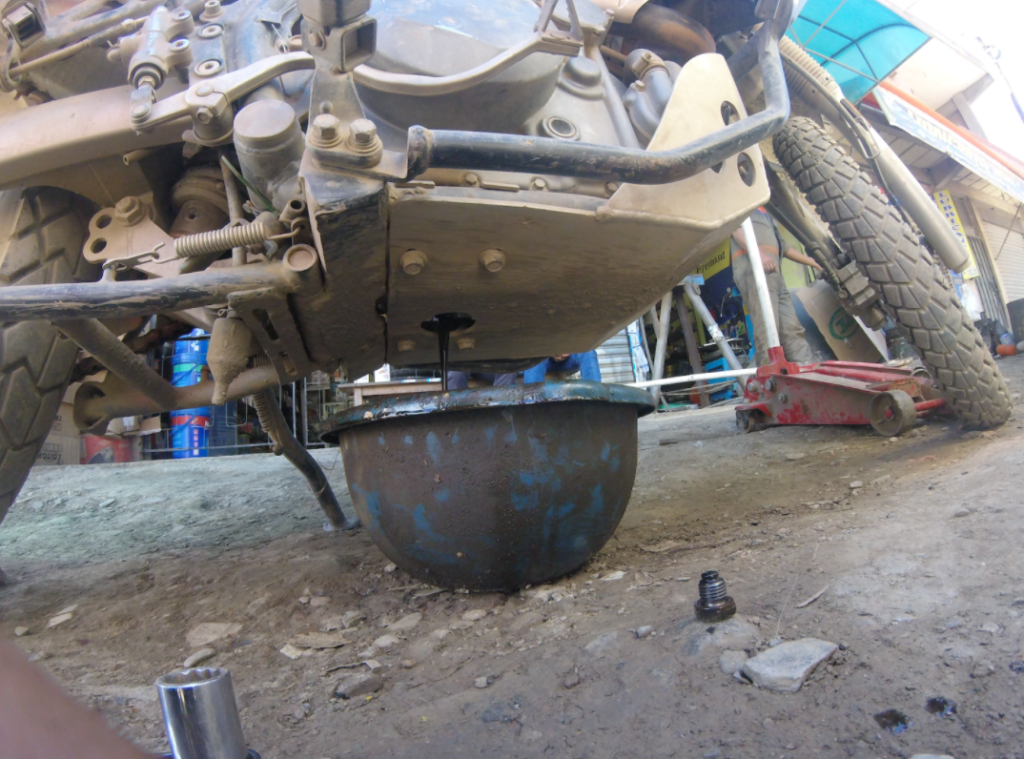
Image: KixMarshall.com – Change your fluids, or at the very least your oil. Your engine will be that much happier after sitting for months in a clean oil bath rather than a sticky sludge pit.
Motorcycle Battery Storage
The lifespan of a motorcycle battery can be determined by the battery quality and its care. A cheap battery is just that, cheap, and likely garbage after a year or two. The care of the battery is vital. A battery that is rarely used will begin to lose its charge and eventually die.
Most motorcycle batteries are 12 volts, however, when they are fully charged they read 12.6 volts or higher. To get the bike to start you’d need about 12.2 volts of power for any hope of getting it running.
The best practice for maintaining a stable battery is to use your motorcycle weekly to keep the battery active or maintain it with a battery tender.
Long term motorcycle battery storage can be done in one of two ways; in the bike or out of the bike. It’s important to note that extreme cold or extreme heat can kill your battery. You should be able to find out the exact resistance from the manufacture or dealer.
How often should you start a motorcycle in storage? If you have an ideal storage location where the temperature is stable and the battery can be easily hooked back up, then running the bike for 5-10 minutes every week or two is a good way to keep the interior of the engine lubed and battery maintained. If the bike is in storage somewhere cold, the idea of warming it up only to cool it down can cause condensation to build up in the bike or fuel tank. You’ll need to decide what is most optimal for you. The chances are that if you’re storing it long-term, running the bike every couple of weeks isn’t an option.
Motorcycle Battery Storage In The Bike
- Unhook the battery from the motorcycle
- Leave the bike parked somewhere with stable temperatures. 5-25oC
- Connect the battery to a battery tender
Motorcycle Battery Storage Out Of The Bike
- Typically done for motorcycle winter storage in cold weather climates
- Remove the battery from the motorcycle
- Store the battery inside or someplace temperate
- Connect the battery to a tender
- If you don’t have a battery tender, charge and test the battery before putting it back
If your battery can’t hold a charge after long-term storage you may want to check the fluid level (applicable in non-sealed batteries). The fluid may need to be topped up with distilled water or the battery may simply be at the end of its life and need to be properly recycled or disposed of.
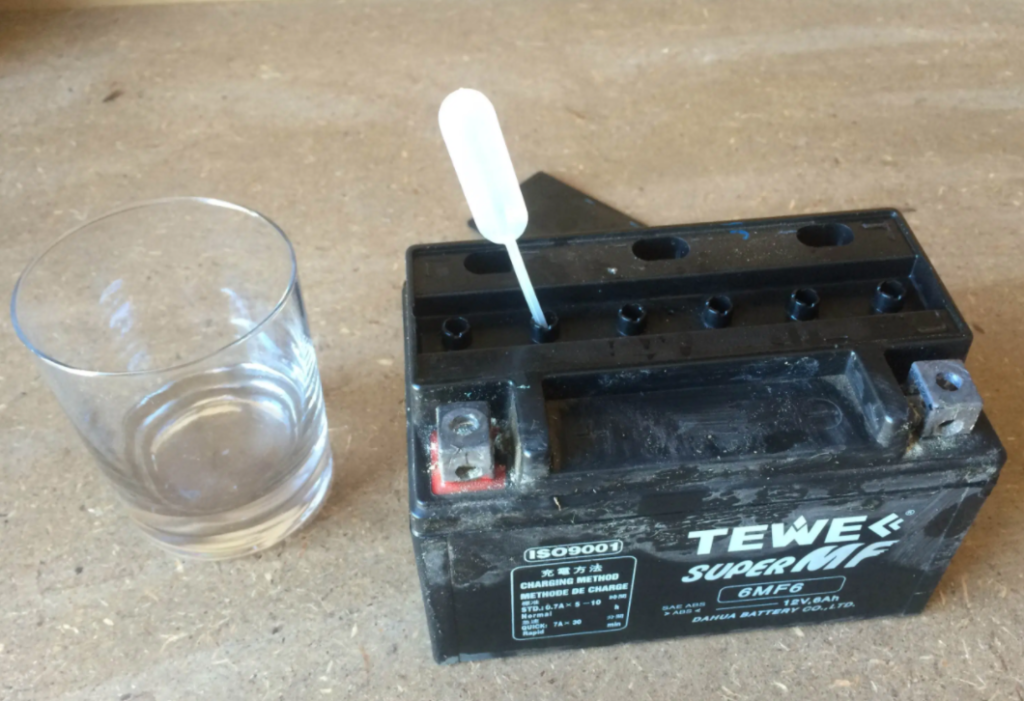
Image The-DIY-Life.com – A dead battery could be as easy to fix as topping it up with distilled water and Epsom salts. This isn’t the case for all batteries, but it might be the solution to yours.
Motorcycle Storage – Tires
When it comes to a motorcycle not used for a long time, parts like tires are actually worse off if they sit than they are if they are being used. Motorcycle tires are made of rubber and flexible compounds that are significantly softer than vehicle tires. Because you only have two of them, this also makes tire care incredibly vital. Make sure your tires are in excellent shape at all times.
When stored, motorcycle tires can become corroded by the surface they are on, flat, warped, or cracked by the sun and elements. To prevent this, it’s best to elevate your motorcycle high enough to bring the tires up off the ground.
This can be achieved with a motorcycle stand, balancing the bike on a box, crate or planks of wood. The best option is a motorcycle lift.
Tires Checklist
- Fill your tires with the recommended air pressure.
- Clean the tires and rims.
- Elevate the motorcycle to keep the tires off the ground.
- Cover your wheels and rims so they are not exposed to the sun or elements
- Check the tread, if they’re too far gone it might not matter and you can replace them.
- Here are some more tire tips to keep your bike riding at its best.
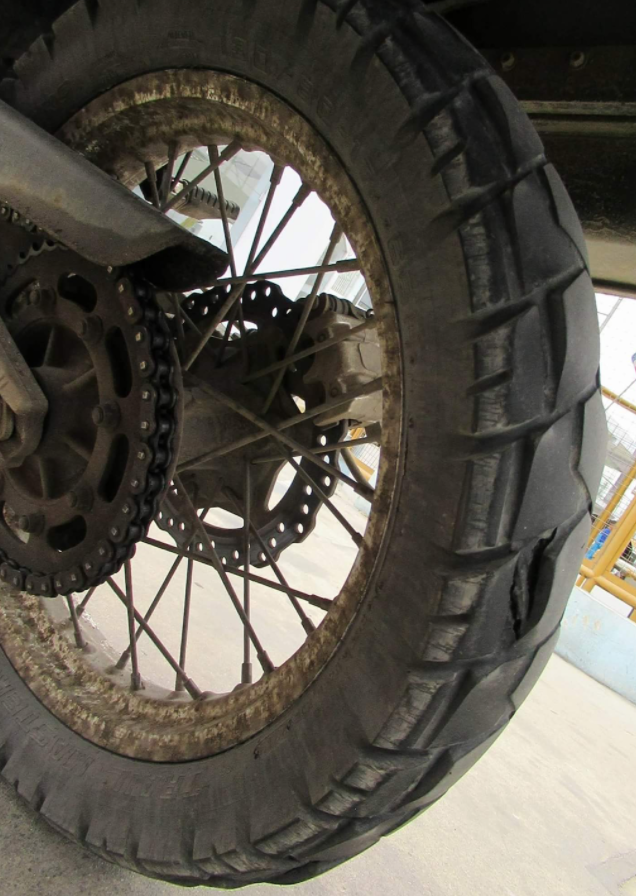
Image: KixMarshall.com – Check your tires. If they are too far gone like this one, then who cares how they are stored, just replace them when you return.
Motorcycle Corrosion Prevention
Plenty of parts on a motorcycle are held together by unfinished metal or metal that has had the paint worn off.
Exposed metal will easily rust and this becomes more amplified if you live along the coast of Vietnam. To prevent premature erosion you should thoroughly clean then lube any exposed metal.
If storing a motorcycle for winter, first wash & dry the bike. After, you’ll want to spray an oil-based lubricant or a product like WD40 liberally on all exposed metal by spraying the metal entirely.
Check and lube the following points
- Chain. Be sure to slowly rotate the chain and cover all sides.
- Exposed and unfinished bolts. Like engine and frame bolts.
- Screws and fasteners. Check Handguards, windscreens, aftermarket attachments.
- Parts that move like footpegs, kickstand, and folding mirrors.
- Metal parts that have been scratched like engine guards and luggage racks.
- It might be worth changing the chain and sprockets while you’re at it. We have a full guide you can read about that too.
Motorcycle Covers & Critters
Where you choose to store your motorcycle can have a lasting effect on how it might look when you return. I once stored a motorcycle under a tarp for 4-months and forgot to take into account the intense rainy season I was leaving behind. I returned to a completely shredded tarp and a bike that looked like it had marginally escaped a tsunami.
How to store a motorcycle in a garage? A garage would be the most ideal option as you can easily cover it with a light tarp to prevent the dust from settling, then follow the rest of the storage steps. If you store outside be sure that your cover is waterproof yet breathable. A plastic cover may cause the bike to get too hot expanding the fuel in the tank or cause moisture to build up, resulting in mold.
Critters, the overlooked threat.
Always on the hunt for the next best place to hunker down and have babies or set up shop to hibernate for the cool months. Critters, rodents, and small animals can find their way into tailpipes on top of carbs, under seats, and just about any nook and cranny of a motorcycle.
It’s best to plug holes with towels or specifically designed tailpipe plugs to keep debris out. You’ll want to make these plugs obvious or leave yourself a note so you remember what you plugged.
This is also a good time to take the air filter out, clean it with a specifically designed carb cleaner, then lube it generously with air filter oil. You may even want to wrap it in a plastic bag if you’re worried about it drying out.
Critters Checklist
- Plug tailpipes, gaps under seats, carbs, or anywhere animal friendly.
- Leave a note on your handlebars or someplace obvious about what’s plugged.
- Clean and lube your air filter.
Safety is important too and if you must store the bike outside, having a quality disk lock will help deter thieves too.
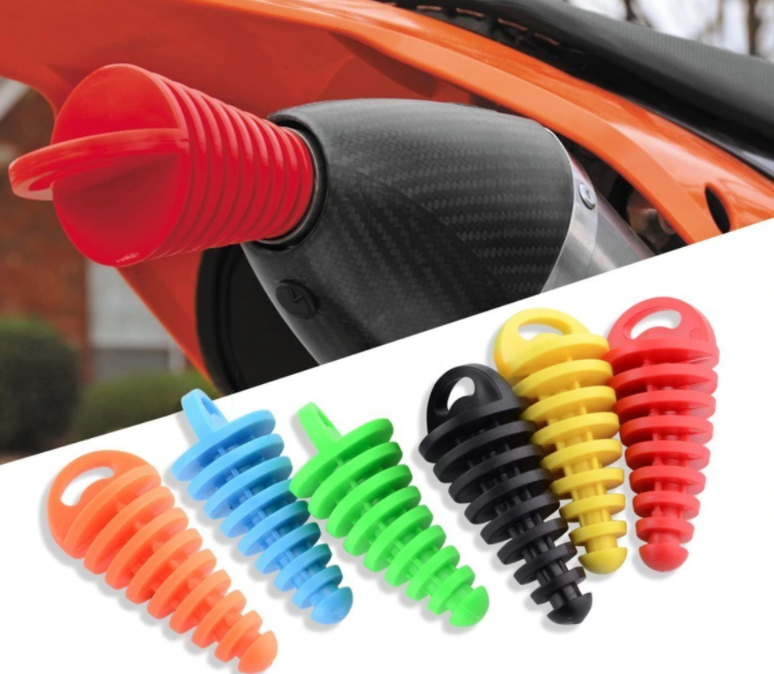
Image: AliExpress.com – Something as simple as a $2 tailpipe plug or an old t-shirt stuffed in your silencer can save you from evicting unwanted tenants upon your return.
How To Store Gear With Your Motorcycle
Depending on your storage options you may end up storing your motorcycle gear with your bike, inside hard or soft luggage bags. Before doing so, make sure all of your equipment is dry and placed in well-sealed bags or boxes. Months of slightly sweaty or damp clothing in storage equals a moldy return.
- Wash all gear and helmet liners.
- Thoroughly dry all gear for several days in the sun.
- Store items in dry bags or well-sealed luggage boxes.
- If you’re looking to replace that old smelly gear, check out our online gear shop. Chrunix.com
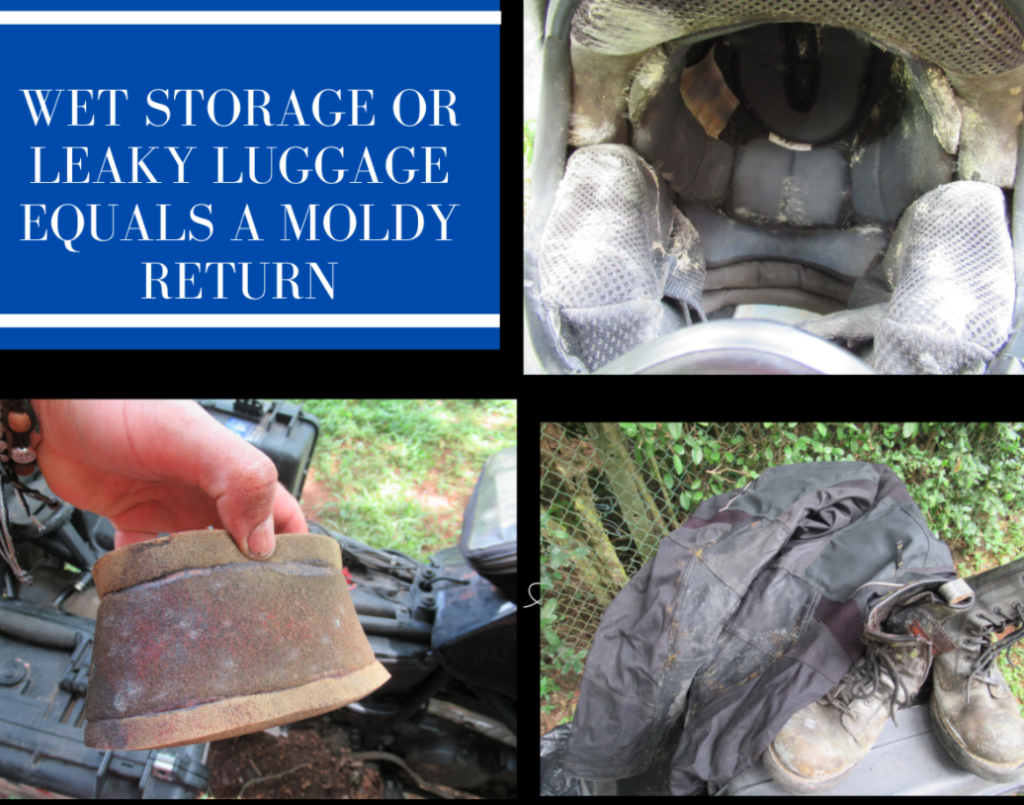
Moldy helmet, pants, boots, and even the air filter! Whether it was the months of pouring rain under a collapsed tarp or sweaty gear stuffed into storage boxes I’ll never know. Dry, properly stored gear is better to return to than a mouth full of mold.
Checklist For Getting Your Bike Running Again After Storage. Air-fuel-spark
After long term motorcycle parking, you can reverse most things you did before putting the bike into storage and re-check the rest. Think of it like you’re buying this bike used from someone you don’t trust. What would you look for?
- For an engine to start, you’ll need air, fuel and spark.
- Check the battery voltage. It should be a minimum of 12-volts.
- Reconnect the battery if it passes the charge test.
- Check fluids; Gasoline, engine oil, coolant, and brake fluid. If any of them are low, you likely have a leak.
- Check tire pressure & the quality of your rubber. A flat tire in the hot sun for 6-months ls garbage.
- Unplug plugged openings.. Having chewed wires isn’t completely uncommon either.
- Check your license plate or bike identifier. Does it need to be renewed in order to drive?
- Prime (if possible) and start the motorcycle and listen for any unusual sounds. A rough start or some initial chugging is normal.
- Burn through a tank of fuel checking the operational points.
